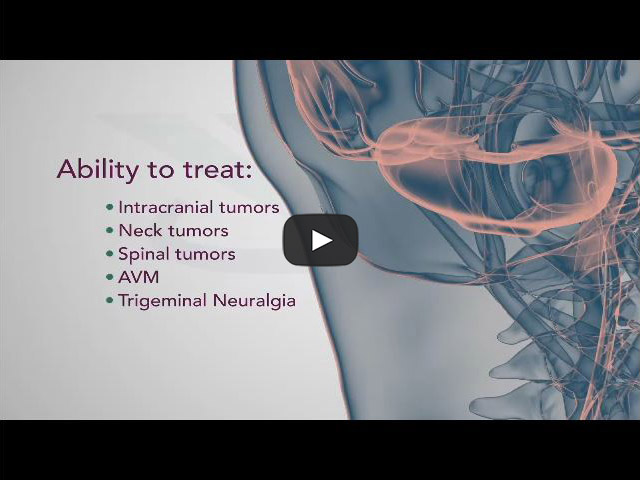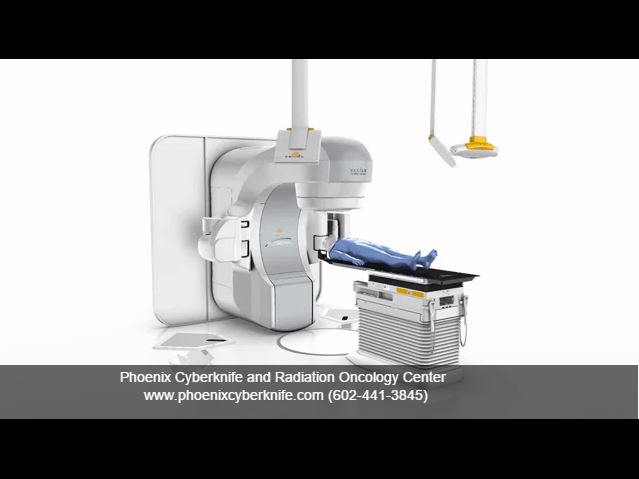TRIGEMINAL NEURALGIA
Phoenix Cyberknife is pleased to announce a partnership with The Pain Center. Click here to learn more about The Pain Center.
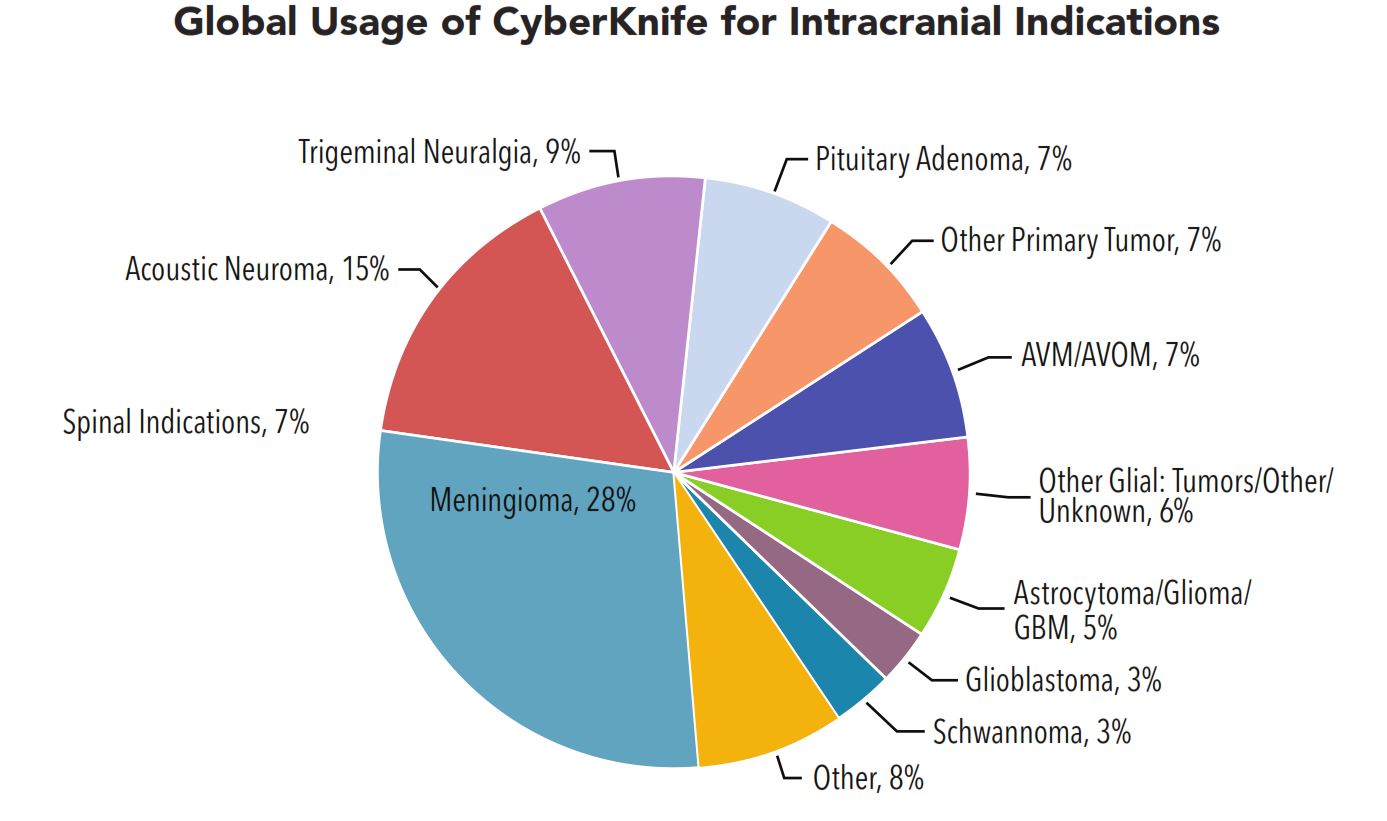
What is Trigeminal Neuralgia?
Trigeminal neuralgia (TN), sometimes referred to as Tic Douloureux, is a nerve disorder that can cause intense facial pain. The pain can be triggered when cold air touches specific facial areas or with movements such as chewing, talking or swallowing.
The disorder occurs in the trigeminal, or fifth cranial, nerve that controls sensation in the face. TN is more common in women, and patients are typically middle- aged or seniors. The unpredictable, severe pain from TN makes it emotionally incapacitating and can significantly impact one’s quality of life.
CyberKnife explained by Neurosurgeons
TN patients are divided into typical and atypical cases. In typical cases, patients suffer from unpredictable episodes of stabbing, electric shock- like pain in a constant location of the face. Such patients can reproduce an attack by touching a “trigger point” on the face or performing a specific activity like chewing or talking. With atypical TN, the pain is a persistent dull ache or burning sensation in one part of the face. However, episodes of sharp pain can complicate atypical TN. There is usually not a specific trigger point with atypical TN, while the pain grows worse over time.
TN is usually related to compression of the trigeminal nerve by a blood vessel. It can arise suddenly and last several years and even decades. The number of attacks can be seasonal and vary from several each day to a few each year.

Trigeminal Neuralgia Treatment Options?
TN is treated with medication, surgery or radiosurgery, all of which offer varying degrees of success.
Medication
Medication, such as Tegretol, Dilantin, Baclofen, Neurontin, Lamictal, Lyrica, Valium, and Ativan, is often the first line of treatment for TN patients. These may be effective for patients, sometimes for long periods of time. However, patients often have their pain return and/or experience fatigue or other significant side effects.
Surgery
If medical treatments are not successful, patients often opt for surgery, including a procedure known as microvascular decompression (MVD).
In younger TN patients, MVD is often preferred, because it holds the potential of a long-term cure without causing significant facial numbness.
Other procedures known as radiofrequency rhizotomy, glycerol rhizotomy or nerve balloon compression attempt to destroy trigeminal nerve fibers that cause pain. These operations have varying degrees of success, and pain relief often doesn’t last more than a few years. Therefore, the treatment typically must be repeated several times over a patient’s life.
Open surgery also carries risks of infection, arterial or cranial-nerve injury or stroke. Additionally, certain patients have medical conditions that prevent surgery, while others may object to surgery.
CyberKnife Stereotactic Radiosurgery
Radiosurgery focuses radiation beams on the trigeminal nerve to essentially disrupt pain-causing fibers. Initially, such treatment was administered only with systems that required attaching a rigid metal frame to the patient’s skull under local anesthesia. But the CyberKnife System is different. It doesn’t require a head frame. Instead, it uses a highly advanced computer-imaging system that can compensate for small head movements, allowing the patient to lie comfortably during the procedure.
At Phoenix CyberKnife and Radiation Oncology Center our trained radiosurgery experts use CyberKnife’s image-guided technology to ensure extreme precision, directing its intelligent robotics to deliver high doses of radiation with sub-millimeter accuracy. This treatment helps relieve pain associated with TN, while minimizing the impact on surrounding tissue. In fact, our team has some of the highest patient satisfaction rates in radiation oncology.
Although other surgical options may also successfully relieve the pain of TN, CyberKnife treatment requires no incisions or anesthetics, has a lower risk of side effects and is typically completed in just one pain-free treatment session. CyberKnife treatment for trigeminal neuralgia is performed as an outpatient procedure, without the use of an invasive head-frame.
CyberKnife treatment process for Trigeminal Neuralgia
TN treatment with the CyberKnife begins with a CT or MRI brain scan of the trigeminal nerve area. During CyberKnife treatment, high-dose radiation beams are precisely aimed along a segment of the trigeminal nerve. CyberKnife treatments for TN take up to one hour.
CyberKnife effectiveness for Trigeminal Neuralgia
Up to 80 percent of TN patients treated with the CyberKnife experience significant and lasting pain relief. The most common side effect is facial numbness that likely correlates with the degree of pain relief. Moreover, pain relief with CyberKnife treatment can be substantially faster than other forms of radiosurgery. This may be the result of the system’s accuracy. Follow-up is needed before doctors can estimate how long pain relief will last.
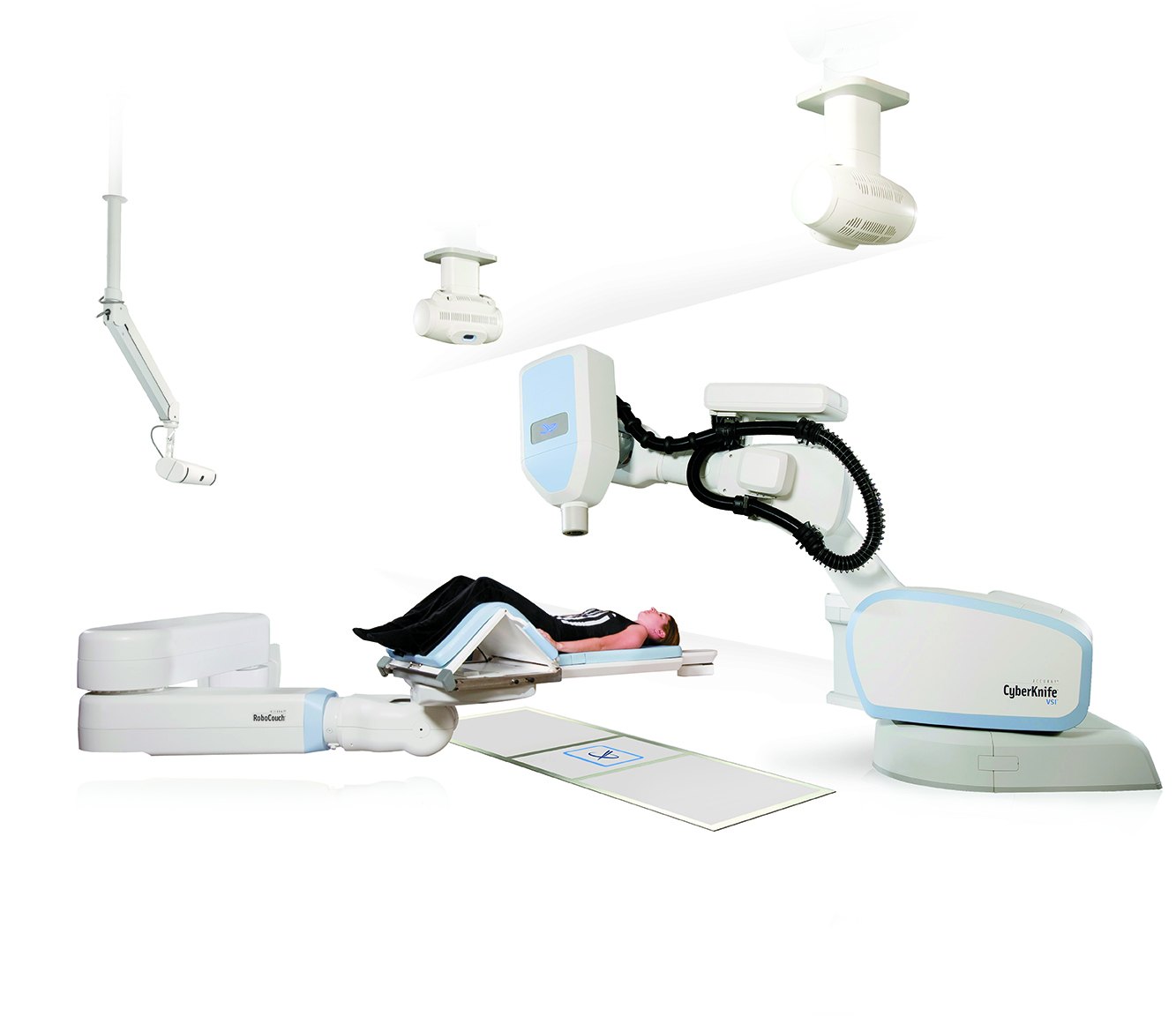
Patient Education
CyberKnife - Brain, Head & Neck Cancer
TrueBeam STx - Brain, Head & Neck Cancer
TrueBeam STx - Animation
CyberKnife explained by Neurosurgeons
Patient Testimonials
Richard 's CyberKnife Treatment Trigeminal Neuralgia
CyberKnife Treatment Acoustic Neuroma (AN)
Phoenix Cyberknife is pleased to announce a partnership with The Pain Center. Click here to learn more about The Pain Center.

At Phoenix CyberKnife and Radiation Oncology Center our trained radiosurgery experts use CyberKnife’s image-guided technology to ensure extreme precision, directing its intelligent robotics to deliver high doses of radiation with sub-millimeter accuracy. This treatment helps relieve pain associated with TN, while minimizing the impact on surrounding tissue. In fact, our team has some of the highest patient satisfaction rates in radiation oncology.
Although other surgical options may also successfully relieve the pain of TN, CyberKnife treatment requires no incisions or anesthetics, has a lower risk of side effects and is typically completed in just one pain-free treatment session. CyberKnife treatment for trigeminal neuralgia is performed as an outpatient procedure, without the use of an invasive head-frame.
CyberKnife explained by Neurosurgeons
CyberKnife treatment process for Trigeminal Neuralgia
TN treatment with the CyberKnife begins with a CT or MRI brain scan of the trigeminal nerve area. During CyberKnife treatment, high-dose radiation beams are precisely aimed along a segment of the trigeminal nerve. CyberKnife treatments for TN take up to one hour.
CyberKnife effectiveness for Trigeminal Neuralgia
Up to 80 percent of TN patients treated with the CyberKnife experience significant and lasting pain relief. The most common side effect is facial numbness that likely correlates with the degree of pain relief. Moreover, pain relief with CyberKnife treatment can be substantially faster than other forms of radiosurgery. This may be the result of the system’s accuracy. Follow-up is needed before doctors can estimate how long pain relief will last.

The CyberKnife System
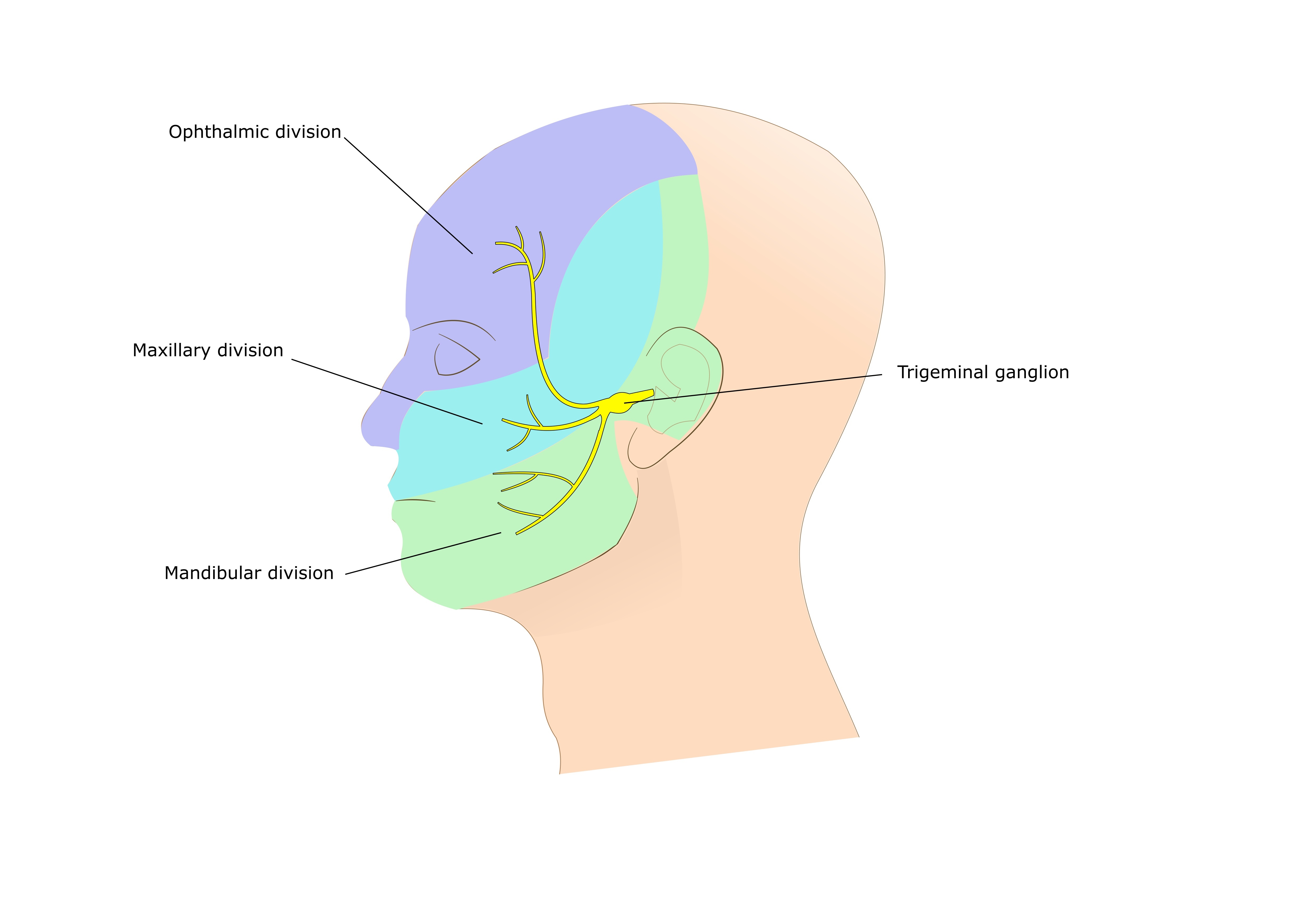
What is Trigeminal Neuralgia?
Trigeminal neuralgia (TN), sometimes referred to as Tic Douloureux, is a nerve disorder that can cause intense facial pain. The pain can be triggered when cold air touches specific facial areas or with movements such as chewing, talking or swallowing.
The disorder occurs in the trigeminal, or fifth cranial, nerve that controls sensation in the face. TN is more common in women, and patients are typically middle- aged or seniors. The unpredictable, severe pain from TN makes it emotionally incapacitating and can significantly impact one’s quality of life.
TN patients are divided into typical and atypical cases. In typical cases, patients suffer from unpredictable episodes of stabbing, electric shock- like pain in a constant location of the face. Such patients can reproduce an attack by touching a “trigger point” on the face or performing a specific activity like chewing or talking. With atypical TN, the pain is a persistent dull ache or burning sensation in one part of the face. However, episodes of sharp pain can complicate atypical TN. There is usually not a specific trigger point with atypical TN, while the pain grows worse over time.
TN is usually related to compression of the trigeminal nerve by a blood vessel. It can arise suddenly and last several years and even decades. The number of attacks can be seasonal and vary from several each day to a few each year.

Trigeminal Neuralgia Treatment Options?
TN is treated with medication, surgery or radiosurgery, all of which offer varying degrees of success.
Medication
Medication, such as Tegretol, Dilantin, Baclofen, Neurontin, Lamictal, Lyrica, Valium, and Ativan, is often the first line of treatment for TN patients. These may be effective for patients, sometimes for long periods of time. However, patients often have their pain return and/or experience fatigue or other significant side effects.
Surgery
If medical treatments are not successful, patients often opt for surgery, including a procedure known as microvascular decompression (MVD).
In younger TN patients, MVD is often preferred, because it holds the potential of a long-term cure without causing significant facial numbness.
Other procedures known as radiofrequency rhizotomy, glycerol rhizotomy or nerve balloon compression attempt to destroy trigeminal nerve fibers that cause pain. These operations have varying degrees of success, and pain relief often doesn’t last more than a few years. Therefore, the treatment typically must be repeated several times over a patient’s life.
Open surgery also carries risks of infection, arterial or cranial-nerve injury or stroke. Additionally, certain patients have medical conditions that prevent surgery, while others may object to surgery.
CyberKnife Stereotactic Radiosurgery
Radiosurgery focuses radiation beams on the trigeminal nerve to essentially disrupt pain-causing fibers. Initially, such treatment was administered only with systems that required attaching a rigid metal frame to the patient’s skull under local anesthesia. But the CyberKnife System is different. It doesn’t require a head frame. Instead, it uses a highly advanced computer-imaging system that can compensate for small head movements, allowing the patient to lie comfortably during the procedure.

